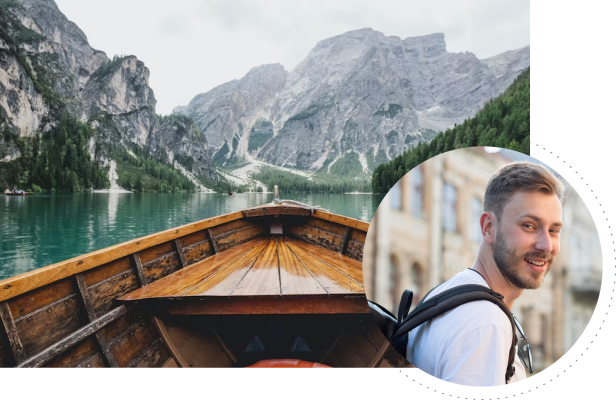Suggested length of stay
A week would be ideal if you want to explore the islands thoroughly. However, if you’re short on time, you can still experience the beauty of the Faroe Islands in as little as three days. During this time, you can visit some main attractions such as the picturesque villages and stunning landscapes.
Modes of transport
Road
Exploring the Faroe Islands’ beautiful landscapes by car, campervan, bus, or motorcycle is a popular way of getting around. It’s easy, flexible and you can decide your own pace – just like a true Faroese. Most islands are connected by an excellent infrastructure of roads, bridges and subsea tunnels, making it effortless to get around. For example, you can take in the majestic view of Múlafossur waterfall in Gásadalur, explore the breathtaking gorge in Gjógv and hike out to the Kallurin lighthouse on Kalsoy all in one day – and even make it back in time for a lamb roast dinner in Tórshavn.
Air
Atlantic Airways offers daily and seasonal flights and connections to 10 different destinations. The company has one of the most modern Airline fleets in Europe consisting of 3 Airbus 319 with a carrying capacity of 144 seats each and 2 Agusta Westland 139 helicopters that provide domestic and offshore flight services.
Rail
The Faroe Islands have no passenger railways due to the difficult landscape, small population, and relatively short distances.
Ferry
The islands not connected by bridges, land bridges, or underwater tunnels are connected by seven different ferry links run by the nationally owned transport company SSL (Strandfaraskip Landsins). The ferry routes range in duration from 15 minutes to two hours. The longest route is between Tórshavn and the southernmost island, Suðuroy, which has a population of nearly 5000 people. The route is serviced by the biggest domestic ferry, Smyril. SSL also runs bus routes between all the populated villages in the Faroe Islands accessible by motor vehicle.
Food
The Faroe Islands are known for their unique and delicious cuisine, which is heavily influenced by their rugged and isolated location in the North Atlantic. One of the most popular dishes is fermented mutton, known as “skerpikjøt,” a staple of Faroese cuisine for centuries. Other traditional dishes include fish soup, sautéed lamb with potatoes, and ræst kjøt, dried and smoked meat. The Faroese also love seafood, particularly salmon, cod, and haddock, which are all caught locally.
Drinking water
Faroe Island tap water is safe to drink.
Visas
The Faroe Islands are part of the Schengen area and many other European countries, meaning you can enter the Faroe Islands without a visa.
Money
The currency of the Faroe Islands is the Faroese króna.
Inoculations & health precautions
Health risks in the Faroe Islands are broadly similar to those in Australia.
Embassy Contacts for Faroe Islands
The Embassy in Denmark is responsible for the Faroe Islands
Australian Embassy – Denmark
Dampfaergevej 26, 2nd floor.
2100 Copenhagen
Denmark
Telephone: +45 70 26 36 76E
mail: copenhagen.embassy@dfat.gov.au
Electricity
In Faroe Islands, the power plug sockets are of type E and K. and you can use your electric appliances.
Getting there
The best way to get to the Faroe Islands from Australia is by taking a flight to Copenhagen, Denmark, which is the main hub for flights to the Faroe Islands. There are several direct flights from Copenhagen to Vagar Airport, located in the Faroe Islands. Alternatively, you can fly to Iceland and then take a ferry to the Faroe Islands. However, this option can take longer and may not be as convenient as taking a direct flight from Copenhagen.
Time Zone
Torshavn, Faroe Islands. Western European Summer Time UTC+1

Ready to discuss your trip to Faroe Islands?
Speak to one of our travel specialists and we’ll create your personalised itinerary just for you.
